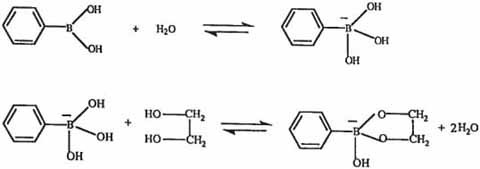
The micro-scale stationary phase for lectin immobilization can be prepared in both micrometer scale capillary and the microfluidic channel.

The fractions which contain glycans specifically affinity bound with immobilized lectin are retained by the immobilized lectin and then released with a concentration or gradient hapten sugar solution. The sample of glycoconjugate is loaded into the lectin column and the fractions in sample, which have no specific affinity with the immobilized lectin, are washed out with binding buffer. A lectin is immobilized on a micro-scale stationary phase. Miniaturized LAC operates on the principle of biological recognition, which is similar to conventional LAC. Bingcheng Lin, in Lectins, 2007 2 Principle of Miniaturized LAC Typical loading buffers are PBS, pH 7.4, or 0.1 M Tris-HCl, pH 8.0. The pH and salt concentration must be such that binding is strong, and if membrane proteins are present, the buffer must contain appropriate amounts of a suitable detergent. The requirements for the buffer in which binding takes place are simple. The pre-column will also protect the main column from clogging. It is strongly advisable to pass the antigen–containing mixture over a ‘pre-column, of agarose (underivatized or coupled with an irrelevant antibody) to remove any molecules that bind nonspecifically. On the whole, columns are preferred for preparative affinity chromatography and there are sound reasons why recovery from columns is likely to be higher than from batch procedures ( Scopes, 1993). Mixing with a magnetic ‘flea’ is likely to fragment the beads, and end-over-end mixing on a rotating wheel for several hours is preferable. Flow rates of 1–2 ml/min are typical.īatch procedures are also feasible, but care must be taken to mix in such a way that all the liquid has a chance to interact with the beads. The use of columns rather than batch procedures allows the antigen–containing mixture to percolate slowly through the matrix, and gives optimal chances for interaction. 731–1550), which can accommodate bed volumes from 0.2 ml to 10 ml. An excellent and inexpensive column is the Bio-Rad Econo-Column (cat. It is customary to perform affinity chromatography in small columns. GODING, in Monoclonal Antibodies (Third Edition), 1996 11.4.3 Binding of Antigen One area that has been under-exploited is the use of specific antibodies to isolate biological materials such as growth factors that are produced at low concentrations in cell culture. This has been extended to include high-pressure immunoaffinity chromatography. Recently, the use of affinity chromatography has been integrated with high-pressure liquid chromatography (HPLC) systems to combine the specificity of affinity chromatography with the speed and sensitivity of HPLC. Since then this technique has had extensive application in all aspects of the biological sciences.

Application of the technique exploded not only because the generality of the approach became clear, but also because a new solid support based on agarose with appropriate chemistry for coupling many types of ligands was introduced. In 1968, Cuatrecasas, Wilchek and Anfinsen applied this concept to the isolation of enzymes and introduced the term affinity chromatography.

The conjugation of an antigen to a solid matrix was called an immunoadsorbent and will be further described in the section on immunoadsorbents. In 1951 Campbell, Luescher and Lerman developed antigen–cellulose columns for use in isolating specific antibodies, a separation that could not be achieved unless one could take advantage of the affinity of the antibody for its specific antigen. The earliest forms of affinity chromatography were actually developed by immunochemists. van Oss, in Encyclopedia of Immunology (Second Edition), 1998 Historical perspective


 0 kommentar(er)
0 kommentar(er)
